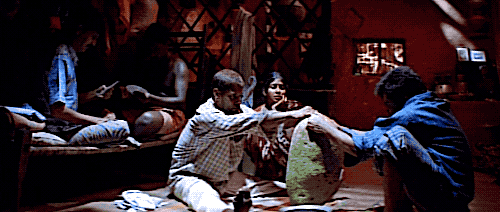What is the main effect of traction for patients with disc herniation?
The options are :
reduces disc herniation
helps in nerve root decompression
changes the alignment of the spine
none of the above
In my recent fun quiz, most people answered correctly, but let's take a moment to discuss why the first three options were spectacularly wrong.
Traditionally, many medical professionals in India believe traction is an effective treatment for sciatica—and, frankly, for all low back pain. The logic seems straightforward: if we distract the joints, we relieve tension, and pain decreases. If a herniated disc is compressing a nerve, traction should, in theory, ease the pressure and provide relief.
Sounds convincing, right? Well, only until you actually think about it. Then, suddenly, it starts sounding like cow pee science.
Basics of Forces and Traction Therapy
When we apply cervical traction, we generally use a force between 3 to 7 kg, while for lumbar traction, the common practice is to use approximately 25% of the body weight. The idea behind this is to create joint distraction and generate a negative pressure within the disc space, leading the herrniated disc to “move back” or “retract” into place.
But can this actually happen?
In reality, it doesn’t—and here’s why. According to Newton’s third law, every action has an equal and opposite reaction. So, when we apply a traction force from one direction, the body inherently generates an opposing force to counteract it. This means that the typical forces applied during traction are often insufficient to truly distract the joints as intended.
Some have suggested that to achieve joint distraction, especially in the lumbar spine, a force equivalent to at least 50% of the body weight might be necessary. But even if we assume that the traction force overcomes the body’s natural counterforce (i.e., the forces are unequal), the question remains:
Does it truly reduce a disc herniation?
Even if we assume the forces are unequal (meaning the traction force exceeds the body's ability to generate an equal and opposite reaction), does this actually reduce the disc herniation? Even under the assumption that traction does "pull" or "reposition" the disc material, what happens once the patient stands up and resumes normal posture? Will the disc stay in its new position, or will it simply re-herniate when the patient stand up from the traction couch or due to activities of dailiy living forces and biomechanics?
As Mark Latash once said, “If you leave a toy frog on the table, it will be in the same position when you come back—but not a real frog.”
This perfectly illustrates the issue with traction. We often think of the body as a passive structure that will remain “fixed” after an external force like traction is applied. But the human body is dynamic, adaptive, and constantly responding to internal and external forces. Once the traction stops and normal activity resumes, the body—and the disc—will not simply stay in place like a toy frog.
Ultimately, this suggests that traction might not actually be “putting” the disc back into its original position. Therefore, it may not effectively resolve the mechanical irritation of the nerve caused by the herniated disc.
Another important question to consider is this: Is disc herniation truly the root cause of symptoms in all our patients?
Currently, there is no evidence to support the effectiveness of traction for low back pain (LBP) or radiculopathy. Some suggest that traction may relieve pain by stretching muscles in spasm, but even this theory lacks strong supporting evidence.
So, what is the primary effect of traction?
In reality, it seems more like a relic from the history of physical therapy—something that belongs in a museum next to gait-training robots. Ultimately, traction is yet another passive modality that likely falls short of delivering the outcomes we once believed it could achieve.
We did a small experiment some years back to show how traction works you may find it intresting
Love
Hariohm





Agree with u sir! But same with hydrotherapy right??